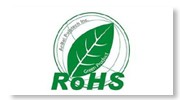European
-
-
EU ROHS certification
CTS
One stop testing and certification service in all fields
24-hour service line: +86-139 2959 4349
Switchboard: +86-0769-2236 0704
Email: Peter@cts -cn. com
On july21,2011, the EU restricted the use of lead (PB), mercury (Hg), cadmium (CD), hexavalent chromium (cr6+), polybrominated biphenyls (PBB) and polybrominated diphenyl ethers (PBDE) in the production of electrical and electronic equipment sold in the EU.
2011/65/eu directive or RoHS 2: on January 2, 2013, EU restricted lead (PB), mercury (Hg), cadmium (CD), hexavalent chromium (CR VI), polybrominated biphenyls (PBB), polybrominated diphenyl ethers (PBDE), di (2-ethylhexyl) phthalate (DEHP), toluene butyl phthalate (BBP), dibutyl phthalate (DBP), diisobutyl phthalate (DiBP) (hereinafter referred to as "phthalic 4P").
In addition to the European Union, other countries and regions around the world, such as China, California, Singapore, India, the United Arab Emirates and Turkey, have also successively introduced RoHS control requirements, making RoHS the most basic access threshold for electronic and electrical products to enter the global market.
Test items and regulatory requirements
The content of each homogeneous material shall not exceed the following limits:
Lead: limit 1000ppm
Mercury: limit 1000ppm
Hexavalent chromium: limit 1000ppm
Cadmium: limit 100ppm
Polybrominated biphenyls (PBB): limit 1000ppm
Polybrominated diphenyl ether (PBDE): limit 1000ppm
Di (2-ethylhexyl) phthalate (DEHP): limit 1000ppm
Dibutyl phthalate (DBP): limit 1000ppm
Butyl benzyl phthalate (BBP): limit 1000ppm
Diisobutyl phthalate (DiBP): 1000ppm
Applicable product range
RoHS directive covers a wide range of products, covering almost all electronic and electrical products and their raw materials:
Application materials
1. Only heavy metal detection: about 5-10g for solid and 5-10ml for liquid;
2. Only brominated flame retardants are tested: about 10-20g for solid and 10-20ml for liquid;
3. Detection of heavy metal and organic pollutants: provide about 20-30g samples;
4. Detection of other organic pollutants: provide about 30g sample;
5. Only the samples of the coating (coating) parts shall be tested, and the approximate weight of the material parts of the coating (coating) shall be indicated; If the weight of the coating (coating) part fails to meet the requirements of sample delivery, the coating (coating) raw materials shall be provided.


